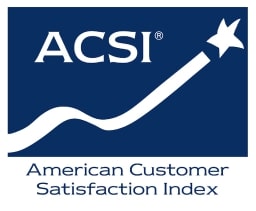With everything from phones to kitchen appliances being labeled “smart” these days, the term may have become white noise for many consumers. Although this selling point is becoming more common on all kinds of devices, it’s important to know which smart items offer nice conveniences versus real benefits.
What is a ‘Smart’ Device?
A smart device connects to your Wi-Fi signal to offer more technological functions than their not-so-smart counterparts. They often feature an app to give you access to data or control away from home. Many robotic vacuums, for instance, can be programmed to clean certain days of the week. But they can also be accessed through an app, so you can command it beyond its regular schedule when you are away and not home to turn it on manually. This is great if you invite guests for supper last minute, for example, and won’t be home from work very long before they arrive, and want to make sure your floors are clean. This is also a good example of convenience.
Convenience vs. Benefits
To many people, the conveniences offered by smart devices are considered beneficial. However, if you look beyond convenience, you’ll find some devices also offer energy and money saving components. Some washing machines, for example, have a load-sensing feature. Users don’t need to guess or estimate the appropriate load- size setting or adjust the machine; the washer itself will gage the amount of laundry in the barrel and use only the precise measure of water needed. This helps save on water and energy bills.
Thermostats
Wi-Fi enabled, programable thermostats are another example of devices that offer both conveniences and benefits. These thermostats are designed to “learn” your household’s heating and cooling habits. The Nest Learning Thermostat®, available from GVEC Home®, does this. It pays attention to when and what temperature you raise or lower it to the first few days. After this, it begins automatically adjusting itself each day. You don’t have to worry about remembering to turn the temperature up before everyone leaves for work and school in the morning. The convenient app also allows you to interrupt the schedule easily from your phone. If you come home from work earlier than normal on any given day and want the house precooled before you arrive, you can instruct the thermostat to lower the temperature from wherever you are.
The ecobee SmartThermostat, also available from GVEC Home, features voice control, and its SmartSensor detects room occupancy to keep your most used rooms comfortable with no intervention from you. Conveniences like these benefit homeowners by helping conserve energy and are estimated to save up to 23% on heating and cooling costs.
Extra Benefits for GVEC Members
GVEC members with eligible Nest or ecobee thermostats can enjoy even more money-saving benefits when they enroll in Peak-Time Payback. This is GVEC’s demand response program that helps lessen demand for electricity during peak-demand periods, usually between the hours of 3 to 7 p.m., over hot Texas summers when the demand for power across the state swells. Lessening demand also helps keep transmission costs stable year-round, benefiting all GVEC members!
Stabilizing rates and helping conserve usage during peak-demand periods aren’t the only ways Peak-Time Payback can positively impact your electricity bill, though. When you initially sign up for Peak-Time Payback, you’ll immediately earn a one-time $85 bill credit. Your savings continue as you earn an annual $30 bill credit every year you’re enrolled from May 31 to September 30!
To learn more about how a Wi-Fi enabled, programmable thermostat such as Nest or ecobee could benefit you, call GVEC Home at 866.684.2359, or visit gvecacservice.com. If you’d like to learn more about maximizing those benefits by enrolling in Peak-Time Payback, give us a call at 800.223.4832, or visit our Peak-Time Payback page.



